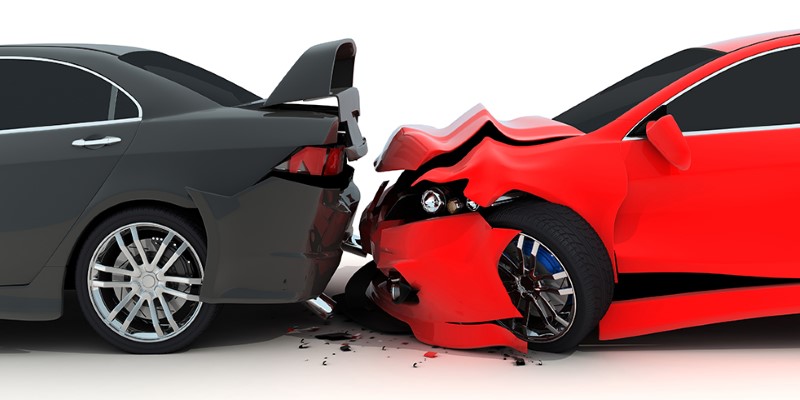How Much Car Insurance Coverage Do You Really Need
Are you wondering how much car insurance coverage is enough? The decision can be confusing, especially with all the different types of coverage available and varying requirements depending on where you live. Some people settle for the bare minimum, while others go for maximum coverage. But how do you know what’s right for you?
In this article, we'll walk you through the key factors that determine how much car insurance coverage you really need and what types of coverage are worth considering based on your unique situation. You'll have a clearer understanding of the coverage levels that fit your needs and budget.
The Basics Of Car Insurance Coverage
Before diving into specifics, it’s essential to understand what car insurance coverage entails. Car insurance policies generally consist of several different types of coverage. While the specific types and amounts of coverage may vary depending on where you live, there are some standard components you should know about:
Liability Coverage:
This includes both bodily injury liability and property damage liability. Liability coverage is required by law in most states, and it pays for injuries and damages you cause to others in an accident.
Collision Coverage:
This helps cover the cost of repairs or replacement of your own vehicle if you collide with another vehicle or object.

Comprehensive Coverage:
This pays for damages to your car that aren’t caused by a collision, such as theft, vandalism, or natural disasters.
Personal Injury Protection (Pip):
PIP covers medical expenses for you and your passengers, regardless of who is at fault in an accident. It’s required in some states and optional in others.
Uninsured/Underinsured Motorist Coverage:
This protects you if you’re involved in an accident with someone who doesn’t have insurance or doesn’t have enough to cover your expenses.
Medical Payments (Medpay):
Similar to PIP, this covers medical expenses but doesn’t cover other costs like lost wages or childcare.

Each type of coverage can be customized in terms of limits and deductibles, which is where the complexity lies. Understanding these basics is crucial before deciding how much coverage you need.
The Minimum Coverage Requirements In Your State
One of the first things to consider when deciding on your car insurance coverage is your state’s minimum requirements. Almost every state in the U.S. mandates that drivers carry some form of liability insurance, but the minimum requirements vary.
For example:
California
It requires a minimum of $15,000 in bodily injury liability per person, $30,000 per accident, and $5,000 in property damage liability.
New York
It requires a minimum of $25,000 in bodily injury liability per person, $50,000 per accident, and $10,000 in property damage liability.

The minimum required coverage might be enough to meet the legal requirements, but it might not be sufficient to protect your assets in the event of a serious accident. This brings us to the next point: how much coverage do you need to protect yourself and your property fully?
How Much Liability Coverage Do You Need?
Liability coverage is a critical component of any car insurance policy because it covers the costs of damages you cause to others. But how much liability insurance is enough?
A good rule of thumb is to choose limits that would cover your assets in case you’re sued. In general, it’s a good idea to have at least $100,000 in bodily injury liability coverage per person and $300,000 per accident. Property damage liability should be at least $50,000 or higher if you live in an area with expensive cars or property.
Here’s why: If you’re at fault in an accident and cause serious injuries or property damage, your liability insurance will cover the costs. If your limits are too low, you could be left paying out of pocket for the remaining costs, which could be financially devastating. Higher liability limits can offer you better protection if you have significant assets to protect.
Should You Add Collision And Comprehensive Coverage?
Collision and comprehensive coverage are optional in most states, but they might be worth considering depending on the value of your vehicle.
Collision Coverage
It helps pay for repairs or replacement of your car after a collision, no matter who is at fault. If your car is new or has significant value, collision coverage can be a smart investment. On the other hand, if your car is older and worth less, the cost of collision coverage might outweigh the benefits.
Comprehensive Coverage
It covers a wide range of non-collision-related incidents, including theft, vandalism, fire, or damage caused by weather events. If you live in an area prone to natural disasters or if you're concerned about theft or vandalism, comprehensive coverage might be essential. However, if you drive an older vehicle, you may want to weigh the cost of this coverage against the value of your car.
Many drivers choose to drop collision and comprehensive coverage once their vehicle's value drops below a certain threshold (e.g. if the car is worth less than $3,000). However, if you rely on your car for work or daily activities, it might still be worth the cost of peace of mind.
How Much Uninsured/Underinsured Motorist Coverage Do You Need?
Even though most states require drivers to have insurance, there are still many uninsured and underinsured motorists on the road. In fact, about 1 in 8 drivers is uninsured in the U.S. This is where uninsured/underinsured motorist (UM/UIM) coverage comes in.
UM/UIM coverage protects you in case you're hit by a driver who doesn't have enough insurance to cover the damage. It's particularly important in states where the number of uninsured drivers is high. If you’re in a serious accident with someone who doesn’t have insurance or has only the state minimum coverage, your UM/UIM policy can help cover your medical expenses, lost wages, and property damage.
Many experts recommend carrying at least the same amount of UM/UIM coverage as you do for bodily injury liability—though you can always adjust it based on your needs and budget.
Striking The Right Balance
When it comes to car insurance, there’s no one-size-fits-all answer. While the state minimum requirements may be enough to keep you legal, they might not provide enough coverage in case of a major accident. Consider opting for higher limits on liability coverage, adding collision and comprehensive coverage for newer cars, and making sure you have sufficient uninsured/underinsured motorist protection. At the same time, try to balance the coverage you need with what you can afford.







